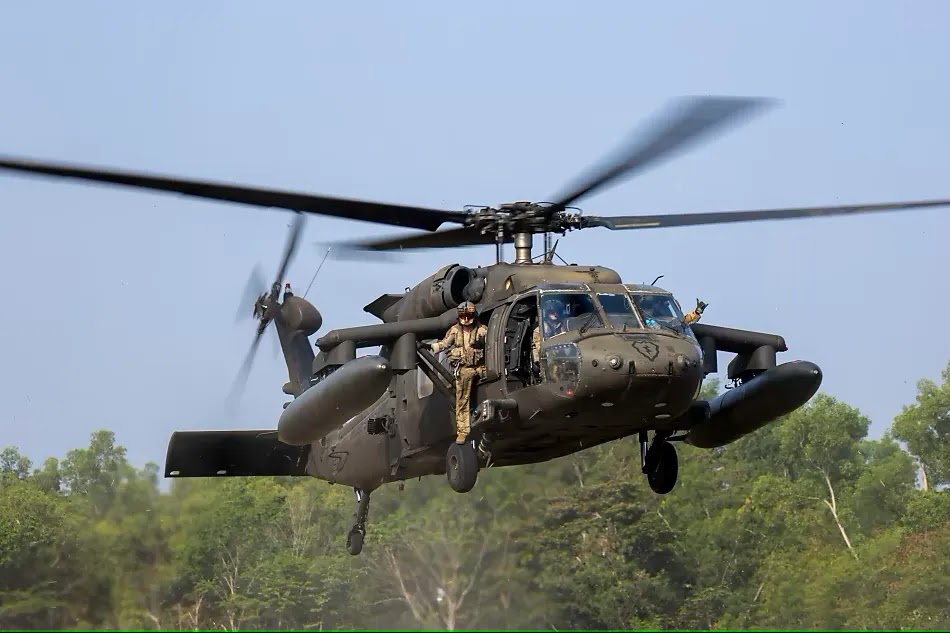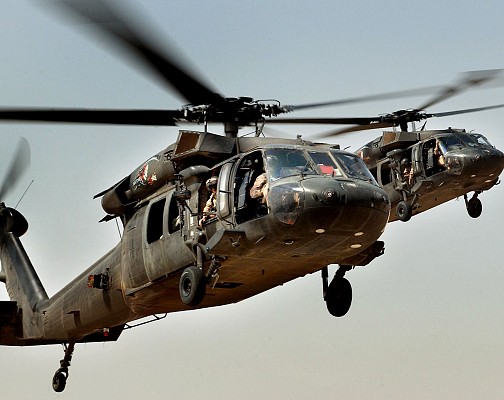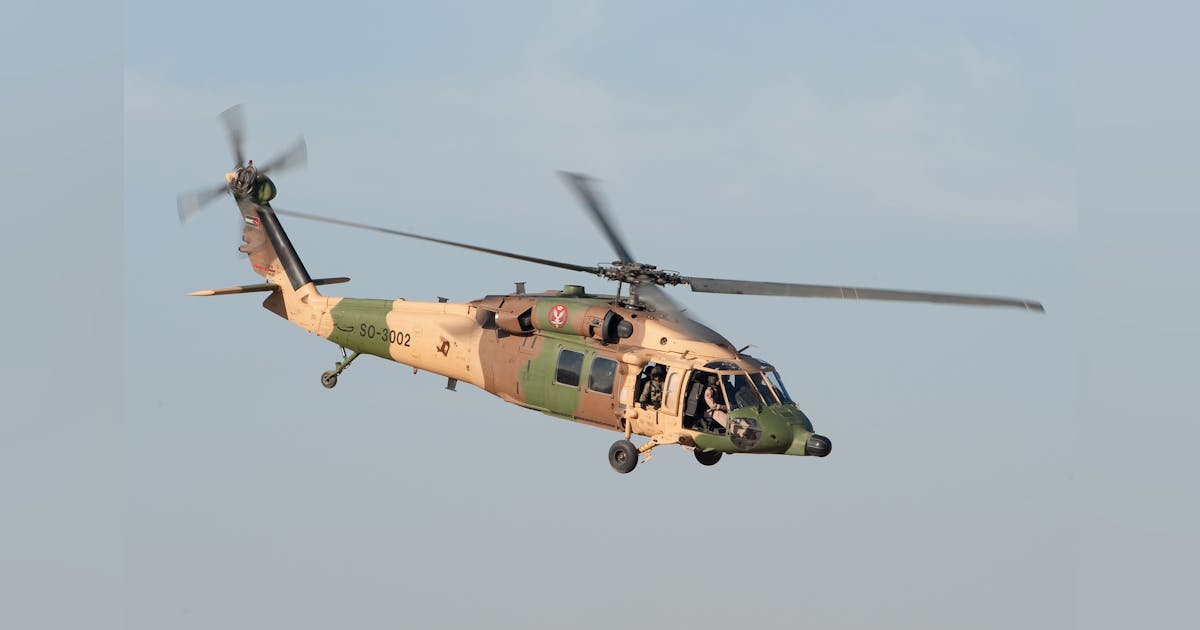UH 60 Black Hawk: How This Iconic Helicopter Supports Tactical and Combat Missions
UH 60 Black Hawk: How This Iconic Helicopter Supports Tactical and Combat Missions
Blog Article
Every Little Thing You Required to Learn About the UH 60 Helicopter
The UH-60 helicopter, a foundation of U.S. Army aeronautics because its launching in 1979, stands for a remarkable blend of design and functional convenience. Understood for its exceptional rate and variety, the UH-60 has been adapted for various missions, from troop transport to medical discharge. As armed forces needs evolve, so also does the helicopter, with ongoing developments focused on boosting its abilities and integrating modern-day technologies. To fully appreciate the value of the UH-60 in modern armed forces operations, one should consider its background, layout, and the future technologies that might redefine its role.
Background of the UH-60
Established in the late 1970s, the UH-60 Black Hawk helicopter became a feedback to the united state Military's demand for a versatile energy helicopter that could do a variety of missions under difficult conditions. The motivation for its style was the drawbacks recognized in the earlier helicopters utilized throughout the Vietnam Battle, specifically in terms of survivability, maneuverability, and rate.
The Black Hawk was made by Sikorsky Airplane, including sophisticated technologies and materials to improve its efficiency and durability. It was formally presented into service in 1979, swiftly ending up being a critical possession for army procedures - uh 60. Its capacity to transport troops, clinical discharge, and logistical support in both fight and humanitarian goals made the Black Hawk an important element of the U.S. Military's aviation fleet
Throughout the decades, the UH-60 has actually been constantly updated, adjusting to the altering nature of war and the progressing needs of modern-day armed forces operations. Its functional background consists of participation in significant conflicts, peacekeeping missions, and calamity relief efforts, strengthening its reputation as a trustworthy and reliable helicopter in numerous atmospheres worldwide.

Layout and Requirements
The layout of the UH-60 Black Hawk helicopter continually reflects a dedication to functional effectiveness and versatility. Created by Sikorsky Airplane, this medium-lift energy helicopter features a sleek, aerodynamic fuselage that boosts speed and ability to move. Its tandem blades system, defined by two counter-rotating blades, reduces vibration and boosts lift capacity, allowing for more secure operations in varied settings.
The UH-60 is powered by two T700-GE-701C turboshaft engines, offering an optimum rate of roughly 180 knots and a variety of around 400 maritime miles. Its durable airframe is built from innovative composite products, making certain sturdiness while keeping a relatively low weight. The helicopter has a maximum gross weight of concerning 22,000 extra pounds, supporting a functional haul setup.

Objectives and duties
A flexible platform, the UH-60 Black Hawk helicopter serves a wide variety of roles and objectives within armed forces linked here procedures. Developed mostly for troop transportation, it can carrying up to 11 soldiers, making it a vital asset for quick deployment and logistical support.
In addition to troop transport, the UH-60 masters medical evacuation (MEDEVAC) objectives, outfitted with sophisticated clinical equipment to supply critical treatment throughout transportation. Its capacity to operate in varied settings improves its effectiveness in battle search and rescue (CSAR) operations, where swift removal of employees is essential.
The helicopter likewise plays a substantial function in reconnaissance and surveillance goals, using onboard sensors and equipment to gather knowledge. Its convenience extends to logistical support, qualified of delivering materials and equipment to forward running bases.
In fight procedures, the UH-60 can be equipped with different tool systems, enabling it to provide close air support. Its multi-role capability makes the Black Hawk an important tool for contemporary military forces, adjusting seamlessly to the progressing needs of combat zone circumstances and ensuring goal success across a range of functional contexts.
Performance and Capabilities
Known for its durable performance, the UH-60 Black Hawk helicopter boasts excellent capacities that improve its operational efficiency across different missions. uh 60. This multi-role airplane is geared up with effective twin-engine Turbomeca Arriel 1D1 engines, giving exceptional speed and maneuverability, with a maximum cruise ship speed of about 150 knots and a functional variety of around 400 maritime miles
The Black Hawk's innovative avionics and fly-by-wire control systems considerably enhance flight safety and handling, permitting it to run in diverse atmospheres, including damaging climate conditions. Its versatility is additional exhibited by its capacity to lug up to 11 completely equipped troops or a payload of about 8,000 extra pounds, making it perfect for army transport, medical emptying, and logistical support objectives.
In Addition, the UH-60 is developed for survivability, featuring reinforced airframes, ballistic protection for staff and guests, and advanced countermeasure systems to evade risks. The helicopter's dexterity and speed, integrated with its ability for rapid deployment, make it an essential asset in modern-day military operations, making certain that it remains a crucial component of tactical air assistance and battlefield flexibility.
Future Dope

One significant emphasis is the integration of sophisticated avionics systems, which will certainly boost situational understanding through enhanced navigating and interaction capacities. This includes the possible use expert system to help pilots in decision-making and mission planning.
Additionally, future variants may include sophisticated materials and style functions to reinforce the helicopter's durability and decrease its radar trademark, boosting survivability in objected to atmospheres.
The intro of hybrid-electric propulsion systems is likewise on the perspective, aiming to boost gas effectiveness and decrease logistical burdens. Such innovations could expand operational array and lower the helicopter's environmental footprint.

Conclusion
The UH-60 helicopter represents a considerable innovation in army aeronautics because its intro in 1979. Its durable layout, flexible capacities, and continual upgrades guarantee its importance in various operational functions, including army transportation and clinical emptying. As modern technology proceeds, future advancements will likely improve its efficiency via the assimilation of fabricated intelligence and hybrid-electric systems. The UH-60's sustaining presence highlights its vital duty in contemporary army operations and highlights the continuous development of military aviation technology.
The UH-60 helicopter, a foundation of United state Military aviation since its debut in 1979, stands for an exceptional blend of engineering and functional flexibility. As army demands develop, so also does the helicopter, with continuous advancements intended at enhancing its capabilities and integrating contemporary technologies.The design of the UH-60 Black Hawk helicopter constantly mirrors a commitment to functional efficiency and convenience. Created by Sikorsky Airplane, this medium-lift energy helicopter includes a streamlined, aerodynamic body that enhances speed and ability to move.The UH-60 helicopter stands for a significant development in army aviation because the original source its introduction in 1979.
Report this page